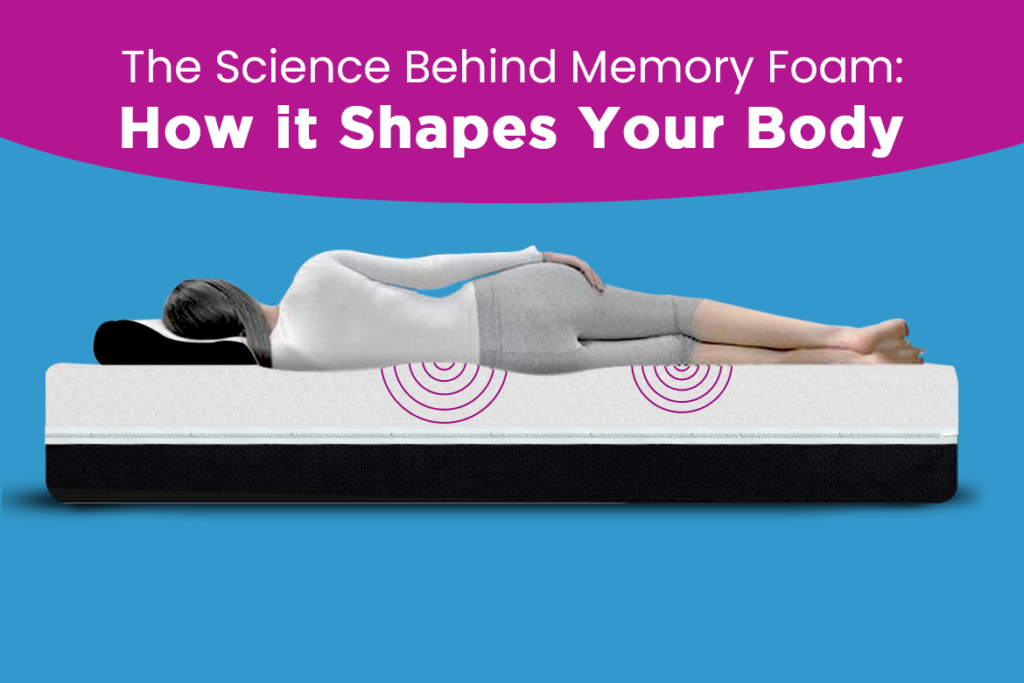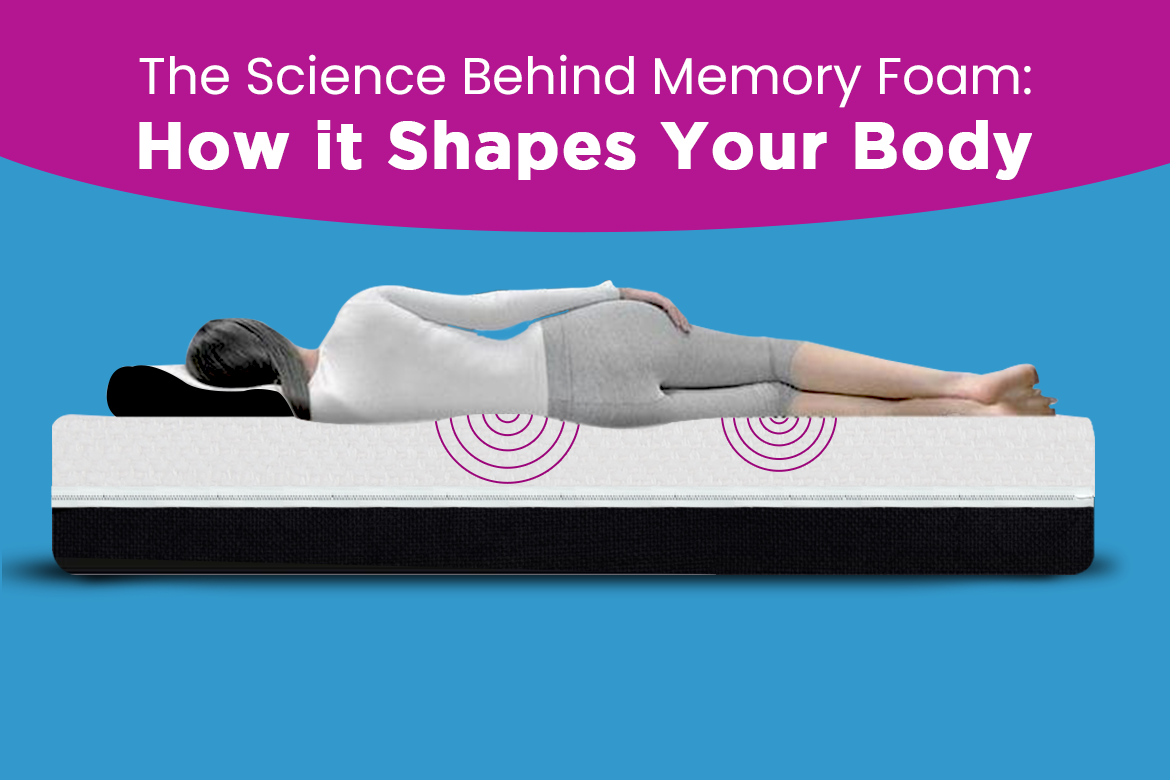
Memory foam mattresses are highly recommended by experts with the results of improved sleep quality as well as pain relief. Doctors and researchers suggest getting memory foam mattresses as it helps in reducing body pain and in even reducing ailments like arthritis. In the long run, memory foam mattresses can also improve the quality of sleep, which in turn improves the overall wellness and health of the user.
People are also ditching old, conventional mattresses and shifting to memory foam for its multiple benefits. The modern market is filled with several options as far as memory foam mattresses are concerned. But how exactly does memory foam material work? What is the science behind it? How does it shape one’s body? This article aims to answer these questions and more.
The Science Behind Memory Foam
Firstly, a memory foam mattress is made from viscoelastic material, which expands to Visco and Elastic. Here, visco stands for viscous which means to have a thick and sticky consistency that is between solid and liquid. Elastic, as we know, is a material that can expand and stretch while returning to its original form when the pressure is removed.
Memory foam is developed with viscoelastic material, which means it changes shape slowly due to its viscous nature and also returns to its original shape due to its elastic feature. The entire process takes place slowly as one sleeps. This is because the viscoelastic nature responds differently depending on how the force is applied.
Generally, a memory foam mattress is stiff and takes longer to change shape when force is applied slowly. This makes it very ideal for mattresses as it slowly molds around the sleeper overnight. This is also ideal for cushioning and absorbing impact – making it handy in automobiles as well.
In contrast, spring mattresses and traditional coir beds don’t have the same material technology. While a memory foam mattress returns to its original shape when the pressure is removed (or the person wakes up), a spring mattress or a coil mattress could sag over time. The same isn’t the case with memory foam mattresses, which makes them more durable.
How Memory Foam Shapes Your Body
In other words, when one applies force or simply sleeps on a memory foam mattress, it adapts to the person’s body structure. When the force is removed or the person wakes up, the mattress returns to its original form due to its elastic nature. All of this happens due to the viscoelastic nature of the memory foam mattress.
Additionally, a memory foam mattress is sensitive to temperature. Normally, the mattress stays in a firm and fixed texture when no one is sleeping on it. When someone sleeps on it, the body temperature warms it up which further moulds and contours the body structure. Even when a person sleeps on their side, it sinks further to support their shoulders and hips.
Weight is another important factor for the unique property and functionality of a memory foam mattress. The higher the weight, the deeper the impression on the mattress. This further ensures people of all weights get good support in their sleep.
History of Memory Foam Mattress
While memory foam mattresses are popular today, it was originally invented by NASA back in the early 1970s. The space supremo designed memory foam for their spacecraft seats. The idea was to create pressure-relieving materials that could cushion astronauts during blastoff where they would be put under immense pressure.
Much later, memory foam was used to manufacture mattresses, pillows, sofas, upholstery, and other furniture. Nevertheless, these products have their roots and scientific base from what NASA developed decades ago!

